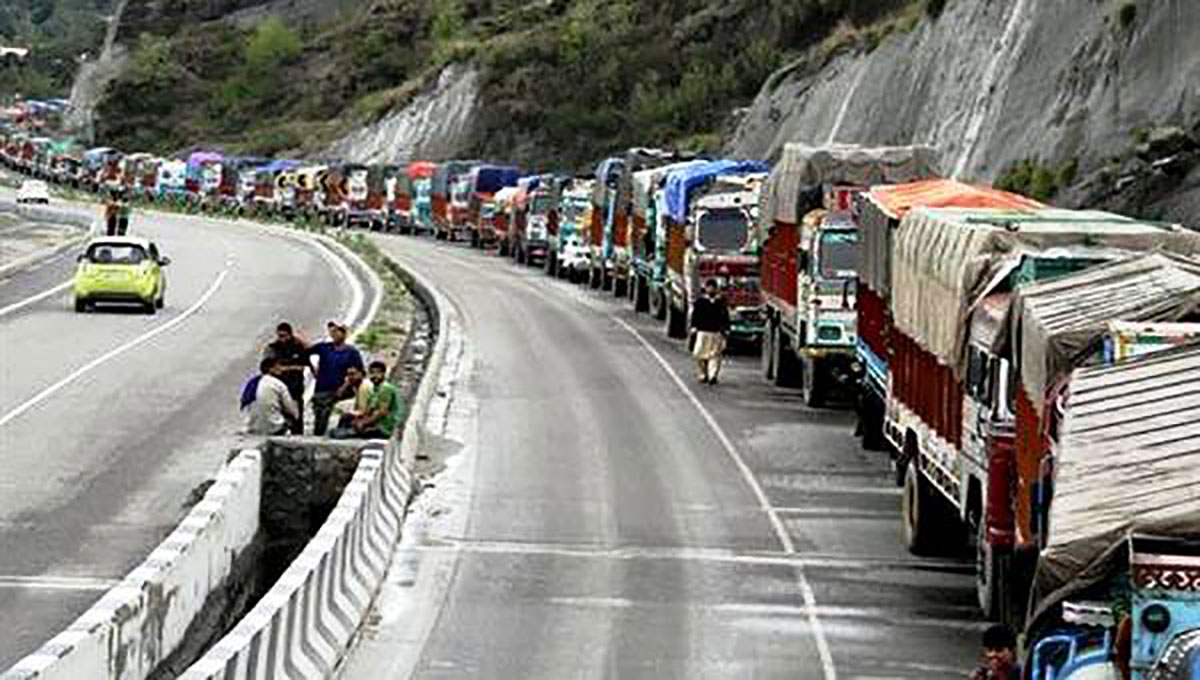In the nineteenth century, the hungry exploited and perpetually persecuted Kashmir artisans would remotely control the fashion streets of Paris. In the twenty-first century, the great-grandchildren of these artists have fanned out. Saima Bhat met Julie Sufi, the woman behind Belluccio brand and the official designer of Australian pageants industry. Her father was a Papier Machie artist and her mother, a keen crewel artisan
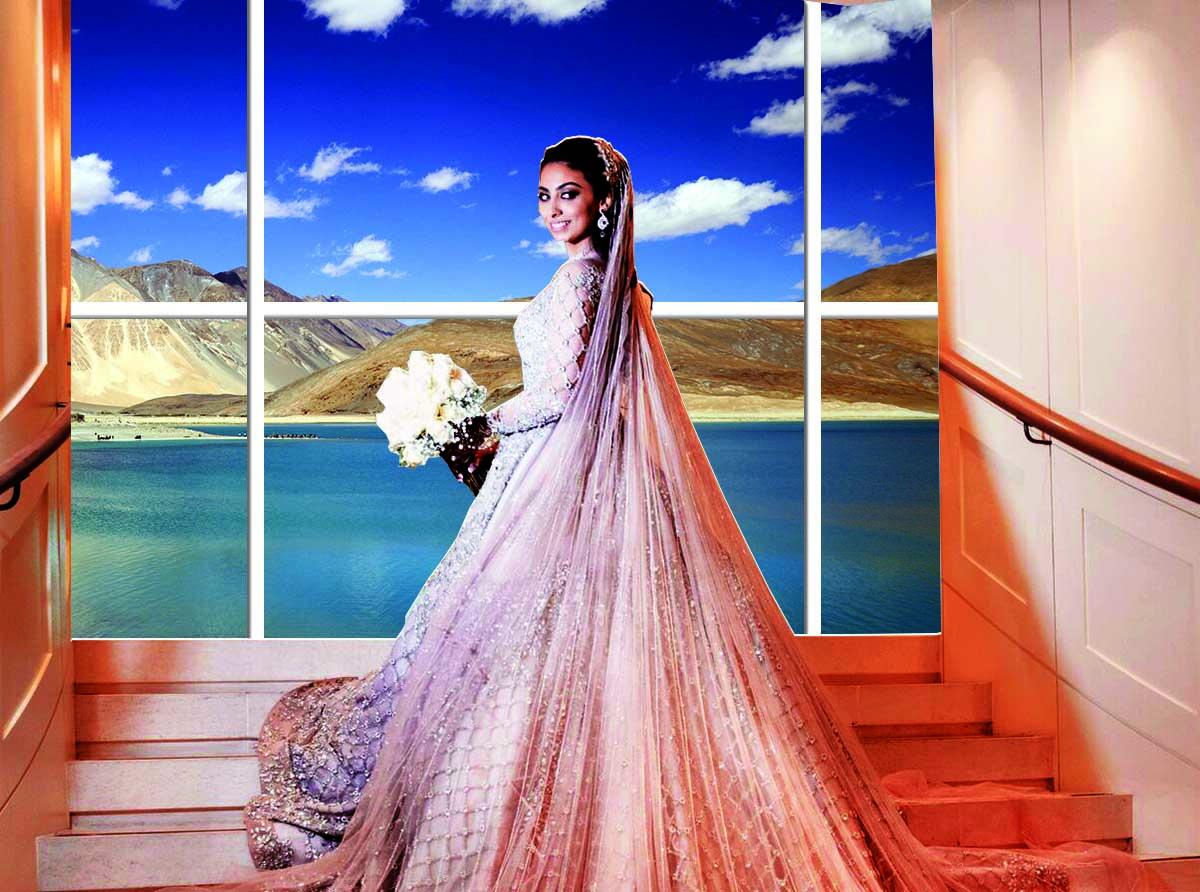
City identified for its style and statement, Melbourne, is a tough turf for designers. Home to style icons, it is hard to stand out and persist. But a woman of Kashmiri origin, 28-year-old Julie Sufi is an exception.
The young New Zealand born designer is the brain behind Brunswick based label Belluccio, a brand that captures everything glamorous and gorgeous.
A blend of a time and tradition, Belluccio has emerged as the strong choice in the Australian pageant industry for the Miss Universe and Miss World contestants. “Our gowns are often seen gracing Red Carpet events by Australian celebrities and socialites,” Sufi said. “We are Gina Liano’s top choice for her evening gowns, having designed her Logies gown earlier in the year, and will be designing exclusively for her during the second season of Real Housewives of Melbourne.”A style with a difference, Belluccio has been the official designers of Miss World Australia since 2011 for the evening gowns and national costumes.
Having her own niche in the leadership of highly competitive world fashion industry, Julie crafts unique dreams in gowns and bridal dresses. She is considered a master in beading. Without compromising the line of the design, she intertwines Kashmiri heritage into her collection with her art in hand-woven-beads of many kilograms on featherweight materials.
Her collection of Belluccio dresses with focus on handwork is her signature, and Julie says the difference has come from her parents; father, Abdul Rashid Sufi, a paper machie artist and mother, Nighat Sultana, who was in the manufacture of crewel embroidery. Her point is that she has revamped the old family business in a new way.
“Early 1980s, my mother got embroidery artists from Delhi and started the sequins and beadworks in Kashmir,” Julie said, during her brief sojourn back home, her first visit in 14 years. “Back then, Bollywood had a lot of embroidery clothing so she started doing it locally, in a way she was doing Belluccio back then in Kashmir. The love and appreciation for the handwork and embroidery started from them and then I was raised with the same kind of thinking.”
For the intricate part of the international sizzling collection she has designed so far, Julie credits her migration to Australia as the main reason. She says her blend of fashion suits the larger clientele.
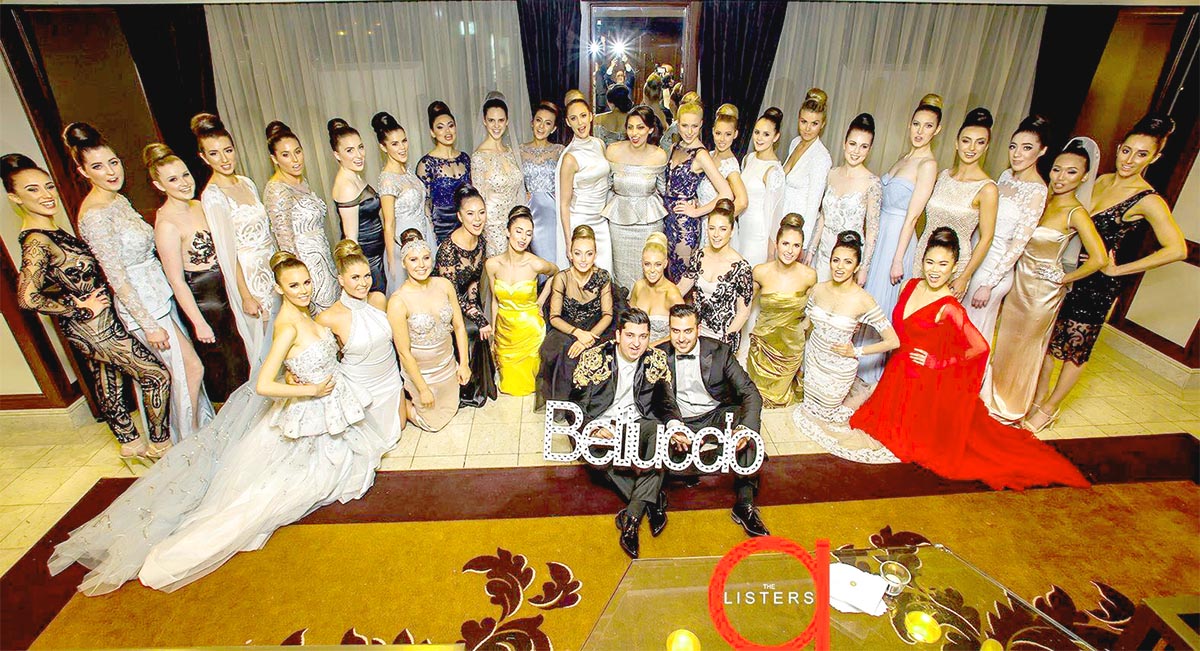
“In Australia, the selection of clothing was not good,” Julie said. “They had a great collection for evening and gowns but there was a niche. You can’t always wear Indian dress to look different. The dresses available were made to cater to the western market, as it was sleeveless, too much open from the front, backless. They couldn’t be worn by a Muslim girl.”
Need to come up with a style, coupled with modesty, become a reason for her to moderate dresses in a way to have everything without compromising the style. Her concern, she says was to give a dress to a Muslim girl in Melbourne, which could be modern and a fashion in vogue. It should not require going out again for the alterations and to put sleeves which ruins the charm of the dress.
“All the dresses that we design I would wear them. If I wouldn’t wear, I wouldn’t design it so you will never see a Belluccio dress that is multicoloured, pinks, or oranges because that is not my style,” Julie insisted. “You will have a 10 to 15 kilos dress with lots of embroidery on it but it will all be neutral shade.”
Influenced by the concept of “timeless” especially from the “old-school Hollywood movies and theatre”, Belluccio dresses have always been neutral shades as per Julie’s taste. Personally, she doesn’t like the colour but loves embroidery. “I personally used to take the ideas of the embroidery, strip the colour and make it neutral like silver, black, white, gold, nude.”
The routine is not followed at Belluccio and the production is not at the mass level. Every single requirement of the client is taken into consideration and the dresses are customised as per their taste. Falling under the high-end segment, it takes Julie many meetings with the customer to finalise the design and later the final product is ready in the next six to twelve months.
Her every dress is popular and others follow the pattern including the celebrities. “We started designing for the red carpets and next five years were just a blow, it was just so like until 2014.”
In 2014, Julie took her detailed Belluccio gowns to the international fashion week in New York. “It was our debut and that was a huge platform for us because first we were very well known locally and then that gave us International exposure. The show went well and the collection was very well received.”
After the fashion week success, Belluccio was approached by stockists and boutiques who wanted to sell the dresses at their outlets. That started building Julie’s brand profile and it continued till 2015.
A huge hit in the fashion world, the year 2016 for Julie was occupied by personal engagements. It was the year of her marriage with a Mumbai techie. A big fat event, Julie lived Kashmir in Melbourne. “I knew it will be hugely covered so I brought Kashmir in Melbourne. The marriage was solemnised the same way it could have been done in Kashmir. From tamul chatun (cleaning of the rice), aab shehrun (bride’s shower), Nikah, Wanwun, Rouf, Izband, Kangir, we did everything,” she said remembering almost every single detail.
Now as Julie is back to her passion, the brand is quite established and has a huge following. The team has geared up for the step next to plan an expansion. “Right now, I and my team are working on how we can accommodate demands from different parts of the world including Kashmir.” Julie listing her priority said.
Meanwhile, she was offered by the Australian pageant industry to be in their panel of judges, and in the next few years, she was in the panel for New Zealand pageant world as well.
An art lover, Julie loves the hand-woven beads. Being passionate about the intricacies of design is in the genes of Julie and the story dates to the times when her father, Abdul Rashid Sufi, a resident of Dalgate in Srinagar and mother, Nighat Sultana, a resident of old city area of Jamia Masjid knew each other as their families had business ties. Her mother was in her family business of Crewel and her father used to buy his stock from her. The trade developed intimacy and both fell in love and soon got married over the phone with the bride in Kashmir and groom in New Zealand in 1986.
The marriage over the phone had the reason. One, the political situation of the state, and, then that was a love affair. Julie says it was not widely accepted to have a love marriage. “But they had decided to get married and my dad always wanted to live outside, he did not want to live in Kashmir,” Julie said. “So, he tried to get here, he travelled to Europe, USA and the doors opened up for New Zealand.”
Julie and her three siblings were born in New Zealand. But when Julie was eleven, the family decided to shift to Australia where they continued with the same business of textiles, garments and Indian handicrafts.
After Julie was done with her schooling, she did her diploma in fashion designing. Soon after, she started her degree in property, real estate and constructions. She says many of her relatives and two brothers were in real estate but the degree did not suit her taste. Her eldest sister studied dentistry and is now settled in UAE.
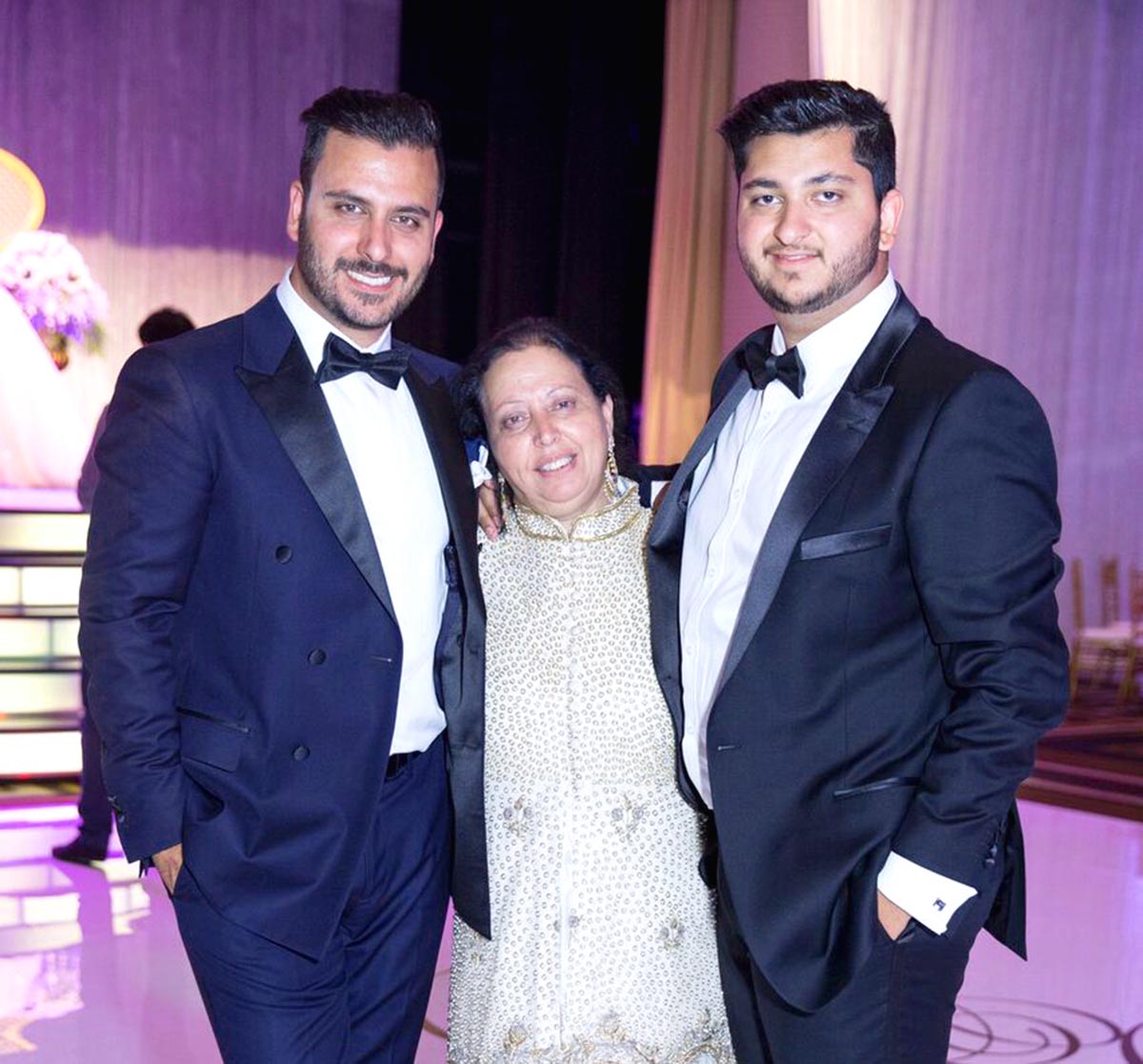
With parents getting into the old age, Julie thought of taking forward the family business. In 2009, her parents had performed Hajj and wanted to slow down with their business. “But I thought I will keep going,” Julie talked of her resolve. “I didn’t want to be just doing the standard garments as my parents did. They were into mass production of low-end kind of stuff.”
Fond of red carpets and glamour as a child, Julie’s dream world was events like Miss World, Miss Universe and other similar functions. Anything sparkly would catch her attention. Once she took reins of the business, she along with her parents visited India and revamped the old ties.
“We used to get fabric from India in a special tie-up, but this time we set up our own manufacturing facility,” Julie, who by then had studied that to control quality she must be in control of everything, said. “My mom and dad set up their own factory just for our own manufacturing and production so that we don’t have to outsource anything to anyone. This is essential that you control the brand and all its process to be sure of the brand you have.”
With this, the company offered multiple roles. Now, her parents started looking at the manufacturing part. Her youngest brother Mamoon is taking care of the operations part of the business in Melbourne.
A year later of taking over from her parents, Julie launched her own brand Belluccio in Melbourne in 2010. “Our collection was ready by July 2010 but then it took us two more months to launch our label. In September, we launched it officially.”
The beginning was modest. Her store was in the bridal district in Melbourne, Sydney. “It is a place in Australia where most of the people come for their wedding shopping. It is like Delhi’s Chandni Chowk where you get everything for your wedding,” Julie explained.
Sceptical about the growth prospects, the location did the job. “I mean I had this red-carpet dream but that was behind the scene. We just wanted to get started at that time, and I think our location worked out strategically,” she admitted. “It gave us a huge advantage. We are located in a 3-km long street and we were the first showroom, so we have more footfalls than others.”
Within the first 12 months, Julie started dealing with Miss World Australia. Surprised, she says, the director of the event walked into her showroom, ordered a dress for herself and once it was ready she said, “Perfectly designed”. They mistook her as a routine high-end customer till she amazed Julie and her team by revealing that she is the director of Miss World, Australia. Soon, she offered Julie to come on board as the official designer. That was the game-changing event in Julie’s career.
“That was completely unexpected and I had no idea that time what the event meant. I was just 20 or 21 that time,” Julie, still excited over the offer, said. The event turned her fortunes. After the event, Julie recalls the change. “Obviously the exposure comes from there so we started getting approached by celebrity stylist who loved our work; it was mostly the embroidery. The way our manufacturing was done was different from everyone else in Melbourne, but no-one else did embroidery back then and obviously being from Kashmiri background, the sub-continent background, we loved embroidery.”
Over the years, Belluccio is a world-class brand available everywhere. Headquartered in Melbourne, its main showrooms operate from USA, UAE, and Romania and now in India.
Since 2011, Belluccio has been the official designer of Miss World Australia, and the pageant participants can only wear their gowns for the whole year. The first dress is the evening gown for the actual Miss World finale night and then there are national costumes to be designed as well. “These are the two outfits and then the whole Miss World event goes for 30 days, and for those 30 days, there is a schedule of five to ten red carpet events and we have to prepare all those outfits as well,” Julie explained the elaborate process. “Generally, it means at least ten outfits for a candidate, and then locally the candidate has a lot of appearances to attend so we have to accommodate for that as well.”
Julie says they have to work with the winner throughout the year. “Over these years, I have lost the account of how many dresses we have made. It must be hundreds if not thousands from 2011 to 2018,” she said.
Conscious of her roots, Julie has a plan for Kashmir operations as well. Getting queries from Srinagar about her possible outlet, Julie says, they are actually planning to start one in Kashmir but some of her friends have suggested her to start in Delhi, Mumbai like places as the Belluccio brand has made its entry in Bollywood as well. Though she says the plan is to work strategically and adequately locate the store so that it is convenient for customers to travel. It will either be Delhi or Kashmir.
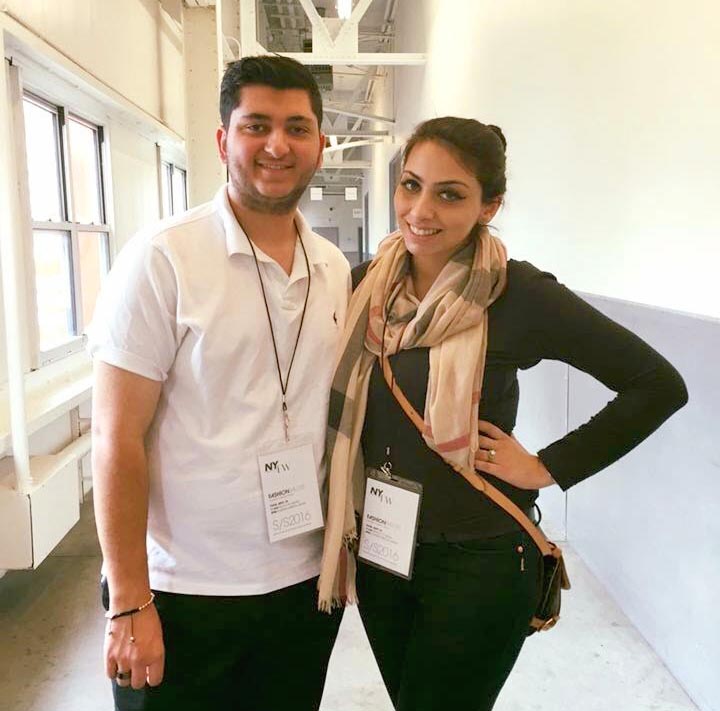
Her mother, now widowed is more interested in Kashmir than Delhi. Julie says as they are leaning towards Delhi, her family does come to Kashmir, more often. “Basically my mother is the big boss. She is the manufacturing head and handles all our staff, recruitments and oversees the management of our factory,” Julie said. “I am just the designer and obviously it was she and my dad. After dad’s death, it keeps her busy. She keeps me on my toes and she keeps on coming to Kashmir frequently like twice to thrice a year, we are trying to figure out where to open up the store, whether in Dehli or in Srinagar or, maybe at both the places.”
Back in Melbourne, the Belluccio has the main showroom with a team of eight members, but the manufacturing lies in Delhi managed by a team of 25 members. “Everything begins in Delhi. We generally take six to twelve months to get a dress ready.”
Designing a dress is a long process and the subsequent stages are more hectic. Once the dress gets designed, it goes to the client for approval with all the notes like what kind of embroidery is going to be there. Once approved, it lands back in the factory where it goes to the different departments who work out at different stages, and step by step, it comes to Julie for approval.
Once she approves, it goes to the next stage, and in the meantime, she has to monitor the brides over there. “We have to take her approvals as well, it is a very painstaking process, everyone is involved behind the scenes, and once everything is approved like we have to get the samples first, once that comes over from the factory, the client approves it and then it goes for the manufacture of the dress. They finish it up to 90 per cent to 95 per cent and then it gets shifted to us in Melbourne where the staff does the final settings with the bride. There is so much involvement behind the scenes in Melbourne, there is no room for air, everything is perfect, and every centimetre we put in is perfect.”
But Julie says the essence of her success comes from her family. “It is something that my parents started and then I came and took over, pushed it a little bit further. Everything has fallen into a place where I am happy the way it is,” she says.











